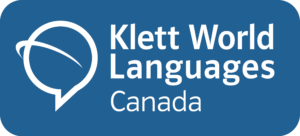Building the Future of World Languages
At Klett World Languages, we are dedicated to building the future of World Languages through transformative language education in the United States. We provide high-quality language materials in Spanish, French, German, and Italian, thoughtfully crafted for today’s reality in U.S. classrooms, following established standards and proven pedagogical methods. These materials are designed to foster authentic communicative competence and empower global citizens. Join us in shaping a future where language education thrives.
Building the Future of World Languages
At Klett World Languages (KWL), we are dedicated to building the future of World Languages through transformative language education in the United States. We provide high-quality language materials in Spanish, French, German, and Italian, thoughtfully crafted for today’s reality in U.S. classrooms, following established standards and proven pedagogical methods. These materials are designed to foster authentic communicative competence and empower global citizens. Join us in shaping a future where language education thrives.
About us
About us
Making the Move to KWL: A Smooth Transition
Klett World Languages is your trusted partner in making teaching easier and more effective, because we know you work hard enough already. Our modern, pedagogically sound programs support you and your students from day 1.

Here are 4 steps to get your class in gear with KWL:
- Connect with your KWL consultant to find the perfect language material for your needs.
- Adopt one of our user-friendly, student-centered programs, carefully crafted to align with ACTFL and state standards.
- Elevate your teaching with our outstanding Student Editions, research-based Annotated Teacher's Editions and supplementary resources.
- Walk into your classroom confident that your activities will be a hit!
Our extensive portfolio
Our print and digital programs enable students of all ages to learn and effectively communicate in a new language! Discover the programs that thousands of schools, teachers, and students rely on.
Inspiring programs for children and teens that align with U.S. standards and proficiency levels.
Innovative programs for all levels of college and university language instruction.
Innovative programs
for today's reality
Our print and digital programs enable students of all ages to learn and effectively communicate in a new language! Discover the programs that thousands of schools, teachers, and students rely on.

K-12
Inspiring programs for children and teens that align with U.S. standards and proficiency levels.

Higher Education
Innovative programs for all levels of college and university language instruction.
What's new at Klett World Languages
Check back frequently to learn more about our upcoming in-person and virtual events and other important updates!
KWL Learning Community
As part of our commitment to language educators across North America, we are pleased to offer a variety of free and premium content designed to foster community and advance professional development.

Conferences & Events
Join us as we connect with educators across the United States, share knowledge, and inspire change.

Live Webinars
Attend our live webinars, where we invite world language educators of all types to share their expertise and create dialogue.

Training Sessions
Sign up for one of our interactive sessions with KWL team members, designed to help you to maximize the potential of our resources.
KWL Learning Community
As part of our commitment to language educators across North America, we are pleased to offer a variety of free and premium content designed to foster community and advance professional development.

Conferences & Events
Join us as we connect with educators across the United States!


Training Sessions
Sign up for one of our interactive sessions with KWL team members.


